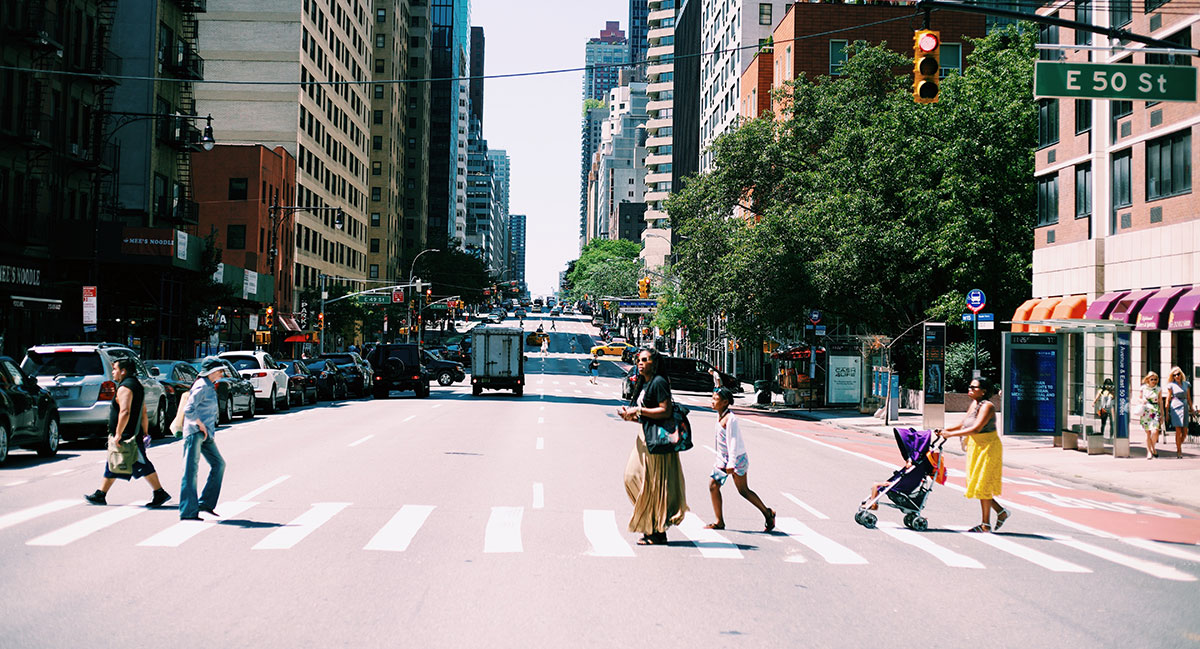
A Rebounding Millennial Wave
June 5, 2020 — The Big Picture
Large cities of North America have followed a rollercoaster of growth and prosperity for more than 100 years. Decline of their urban cores after 1950 seemed to go hand-in-hand with the rise of the suburbs, but all that reversed—an inversion–with the new millennium. Now economic growth, rising rents and young adults were shifting toward the center of cities. Where did that come from and how long will it last?
The sharp decline in urban crime from its peak in 1991 surely made cities more broadly attractive. And the revival of the downtown office growth drew college-educated workers. Even housing prices rose only slowly through the year 2000, making cities both affordable and more livable.
The sudden revival of young people in cities, a miracle of the 2000s, seemed to come out of thin air and continued through the 2010s, so it seemed to be permanent. Throngs of native-born young people poured into downtown areas, even those of white race whose parents and older sibs previously had fled to suburbs. Nothing like it had been seen in more than half a century. Urban preferences and lifestyles had instantly changed, or had they?
The era of peak Millennials had arrived on schedule in both adulthood and the city, formed by the dramatic climb of births in the U.S. after 1980, peaking at 4.2 million born in the single year of 1990, a number 32% larger than in 1976. This 14-year upswing translated into an upswelling of young adults some 25 years later, soaring from a low in 2001 to a peak in 2015. The ever-rising numbers created an impression of growing urban preference by virtue of their rising presence.
Peak Millennials coincided, in wretched timing, with the economic crash of 2008 and its sluggish recovery, which amplified their urban concentration. That shockwave froze the normal career progress of young people who were blocked from their first rung on the ladder because promotion pipelines had stalled for their older classmates who now refused to turnover their current intern and entry positions. Nonetheless, every June an ever-larger wave of fresh graduates spewed into the city destinations where they joined a lively pool congregated in shared housing and gentrified neighborhoods. The recession had also stalled housing construction and stymied opportunities for homeownership, so that the normal flows through the housing market were dammed and the pool of urban Millennials grew ever larger. The peak Millennial prophecy was that this was only temporary.
Indeed, evidence is now clear that fortunes rebounded late in the decade, at least prior to the sudden 2020 recession. The resulting population outflow escalated from inner districts of large metros to suburbs or small metros, increasing in the U.S. by 400%, from 80 thousand in 2013 to 400 thousand in 2017. All this outflow was occurring prior to the coronavirus pandemic, but it could increase even more in the next few years, and not just for fears of health risks in a dense city.
Millennials are not Peter Pan, and the peak Millennial cohort was always destined to arrive at age 30 in 2020. Increased partnering and family making will drive them toward more spacious and affordable housing. High housing prices are a major spur for outward movement, joined now by a new hesitance regarding congested neighborhoods. However, this giant generation likely still retains stronger urban tastes than its predecessors, eschewing remote, outlying subdivisions in favor of close-in, more walkable older suburbs, ideally with transit connections, a farmers market, and good schools.
The giant Millennial generation will eventually follow the footsteps of the Baby Boomers, but not in the same old shoes. Currently ages 55 to 74, the Boomers hold 42% of the nation’s owned homes, the majority in the suburbs, and their expected coming exodus from the housing market will likely turnover their homes to the growing demand of Millennials approaching early middle-age.
Yet the repurposed Boomer houses and neighborhoods will not be the same, for the Millennials will leave their own mark. Although home remodeling is currently in a deep pause, over the coming decade Millennials will really dig in. Kitchens will be made more central, bathrooms upgraded, and dining rooms converted into home office space with 21st century video communications. The rediscovered suburban neighborhoods will also be invigorated with urban features of coffee shops, convenient take out, and abundant pet services, not to mention many flavors of child care, all to enhance greater livability.
The good news for all is that the Millennials’ early urban experience could lead to a substantial upgrade of suburbs and even entire urban areas.
Featured photo by Jesus Kiteque on Unsplash.